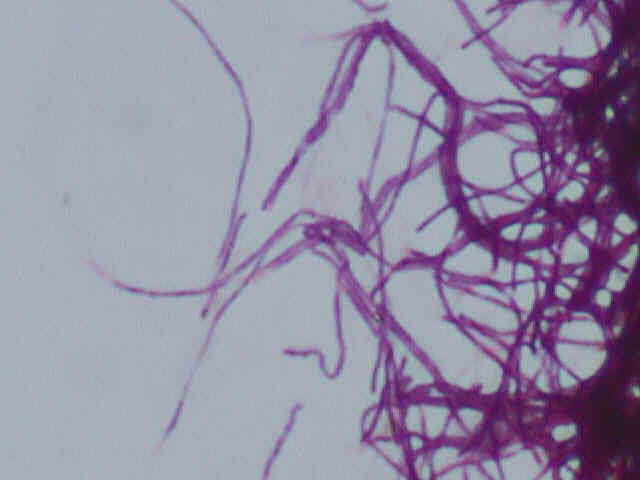
Abstract
* Introduction
*
Media * Procedure
* Results
* Discussion
Our
Theoretical Protocol * References
and Links
Streptomyces is a genus of the group actinomycetes. Members of this filamentous group are gram-positive bacteria with branching filaments that can form a network called a mycelium. This mycelium shares many of the same characteristics as filamentous fungal mycelium, for both produce spores (Brock). Heating samples containing streptomyces encourages spore formulation and does not damage the condition of streptomyces bacteria.
Streptomyces is plentiful in soil, including compost, potting soil, and mulch. It grows best between 25°C and 35°C in a dark environment with a pH range of 6.5-8.0. Media containing inorganic salts, starch, calcium malate, undigested casein and potassium nitrate provide needed carbon and nitrogen energy sources. Colonies usually appear after 5-7 days of incubation (Bergey's). Cyclohexamide is often added to the growth media to inhibit the growth of mold. Heated samples also select against bacteria that cannot withstand the temperature. Colonies are white, opaque, rough, leathery, and hard to remove due to branching filaments that have grown into the media. The bacteria are non-motile, catalase positive, aerobes with an oxidative metabolism. Colony metabolites called geosmins give Streptomyces and its habitats a distinctive earthy odor.
Enrichment and
isolation of streptomyces was of particular interest because of the widespread
applications of its derived products. Streptomyces is a useful
biological tool in fighting diseases because of its ability to produce
antibiotics, such as tetracycline. These antibiotics, produced by
50% of all strains, can be used to kill pathogenic microbes. Identification
of the antibiotic-producing colonies can aid in the study and discovery
of new antibiotics.
